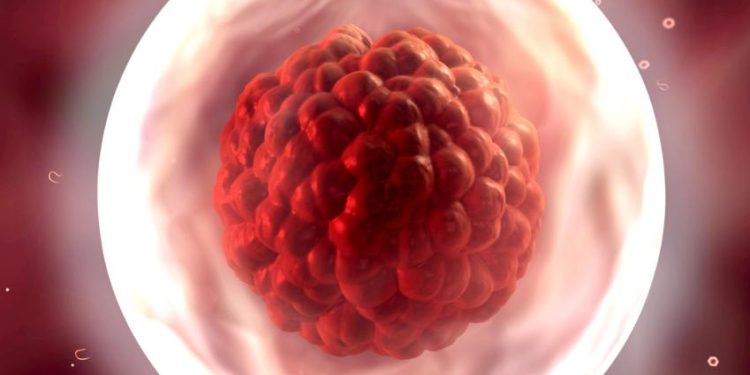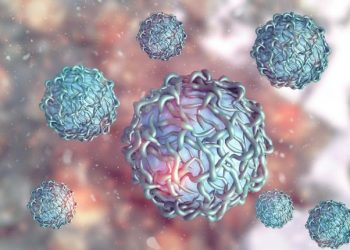Treatment won’t cure your pancreatic cancer at this stage, but it might help relieve symptoms. You may have chemotherapy or radiation. You can also join a clinical trial for state-of-the-art care and new treatments that might improve your chances of living longer.
MD Anderson uses a contemporary staging system called resectability staging to plan your treatment. You might receive chemotherapy before surgery or radiation afterward to destroy any remaining cancer cells.
Symptoms
The pancreas is a large gland that makes juices that help digest food and hormones that control blood sugar levels. It is located between the stomach and the spine. Pancreatic cancer starts in the cells that line the pancreas and then spreads to other parts of the body. When a cancer gets to stage 4, it has already spread beyond the pancreas and into nearby tissues, such as the liver or lungs.
People with stage 4 pancreatic cancer often have a lot of symptoms and may not feel well. The symptoms depend on where the cancer has spread and what part of the pancreas it affects. The first sign is usually jaundice (a yellowing of the skin and eyes). The pancreas makes a liquid called bile that helps break down fats in the digestive system. The bile goes out through a tube called the bile duct. If a tumor in the pancreas presses on this tube, it can cause a buildup of bile and lead to jaundice. The symptoms may also include pain in the belly or back and weight loss.
Some people with stage 4 pancreatic cancer can still be treated with surgery. This is because the cancer has not spread into arteries or veins that connect to the pancreas. Doctors can remove parts of the pancreas called the head, body and tail. They may also remove the spleen if it has been affected by the cancer.
Other treatments for stage 4 pancreatic cancer are chemotherapy and radiation therapy. Doctors use chemotherapy drugs, such as gemcitabine (Gemzar), to kill cancer cells in the pancreas and any that have spread to other parts of the body. They may give chemotherapy by mouth or into a vein in the arm. Radiation therapy uses X-rays or other high-energy particles to damage cancer cells and stop them from growing. It is usually given in addition to chemotherapy.
Getting a diagnosis of cancer at any stage can be distressing. It’s normal to feel anger, fear, anxiety or depression. Talking to your family and friends can help. You might also find it helpful to join a support group.
Diagnosis
Pancreatic cancer is hard to diagnose in its early stages because it doesn’t usually cause symptoms until it has spread. Doctors find out if you have stage 4 pancreatic cancer by taking a biopsy of your pancreas or getting an ultrasound to see the size of the tumor. Then they use a combination of tests to find out how far the cancer has grown and where it has spread.
Pancreatic cancer spreads to other organs in the body, most often to the liver and lungs. It can also grow into nearby blood vessels and spread to lymph nodes near the pancreas. Doctors describe this stage as having “metastases,” or cancer that has spread from the place where it started in your pancreas.
The most common treatment for stage 4 pancreatic cancer is chemotherapy, which uses medication to kill cancer cells and stop them from growing. Your doctor may also give you other drugs to manage pain and other symptoms. You might also get radiation therapy or a clinical trial of an experimental drug.
If your tumor is still confined to the pancreas, it is considered “resectable” because it hasn’t spread into major blood vessels. You can have surgery to remove the entire pancreas, or just part of it (the tail and body). Doctors may also remove your spleen if the cancer has spread there.
Your doctor will want to know your medical history and what other health conditions you have. They’ll also do a physical exam and order some lab tests. Your doctor might also do a CT scan to check for a pancreatic cancer tumor and other health problems. They might also do an endoscopic retrograde cholangiopancreatography (ERCP) to look at your pancreas and other parts of your abdomen using a tube that goes down your throat.
You can learn more about survival rates from organizations such as the National Cancer Institute and the Pancreatic Cancer Action Network. But remember that survival rates are estimates and they can vary from one person to the next. Many factors can affect a person’s outlook, including their age and overall health before they were diagnosed with pancreatic cancer.
Treatment
In stage 4 pancreatic cancer, the tumor has spread beyond the pancreas. It may have grown into nearby tissues or into important arteries and veins in the area. It may also have spread into the liver, lungs or bones. Most people in this stage have advanced disease. It is harder to treat in this stage than earlier stages of the disease.
Doctors use the results of diagnostic tests to find out how far the cancer has spread. This helps them decide which treatment options are best. They may suggest surgery, chemotherapy or radiation therapy. They can also recommend clinical trials that offer new treatments.
Treatment for pancreatic cancer at any stage is not easy. The cancer can be difficult to remove surgically. It can also grow quickly and become resistant to treatment. It can also return to the body and spread again after treatment.
People with this stage of pancreatic cancer often need palliative care, which is a combination of treatments to make symptoms better. These treatments can include pain medicines and other drugs that stop the growth of cancer cells. They can also include a special procedure called endoscopic stent placement that drains bile from the gallbladder.
Sometimes, the doctors can treat this stage of pancreatic cancer by shrinking it with chemotherapy and radiation therapy before surgery. This is often done at a medical center that has experience with pancreatic cancer. It is often done in combination with other therapies, like a stent or a bypass operation.
In some cases, a person might have a genetic mutation that makes their tumor more likely to grow faster. Doctors can give them drugs that slow the cancer’s growth by blocking the enzyme that makes cells divide. These drugs are being tested in clinical trials for people with hereditary pancreatic cancer.
There are more treatment choices for pancreatic cancer now than there were a decade ago. But more research is needed to develop better treatments. It is important to look for financial resources, such as insurance assistance or drug company programs to help pay for medications (for example, AstraZeneca’s Access 360 program for Lynparza). It is also helpful to join a support group that can provide emotional and practical support to those with pancreatic cancer.
Survivorship
Although a diagnosis of stage 4 pancreatic cancer means that the cancer has spread beyond the area of the pancreas, doctors can still treat this type of advanced cancer. Typically, at this stage of the disease, treatments focus on improving quality of life and relieving symptoms. These therapies may include chemotherapy or targeted therapy, which involves taking medications that target specific parts of the tumor. You may also receive treatment as part of a clinical trial.
The five-year survival rates for pancreatic cancer vary, but it is important to remember that these numbers are estimates. Many people live much longer than these numbers indicate, and some are even cured of their pancreatic cancer. These rates are based on what happens to the majority of people who get this disease, but every person’s experience with the disease is unique.
A person’s prognosis can depend on several factors, including the location and size of the primary tumor, the grade of the tumor, and whether the pancreatic cancer has spread to nearby lymph nodes. Doctors determine the location and grade of a tumor using imaging tests such as computed tomography (CT) or magnetic resonance imaging (MRI). They also use a patient’s age, overall health, and other medical conditions when deciding on treatment.
It is often difficult to surgically remove a pancreatic cancer that has spread to nearby tissues or organs. In addition, the fatty tissue of the pancreas can make it hard to see a tumor or feel its presence. For these reasons, most doctors recommend palliative care after a diagnosis of stage 4 pancreatic Cancer. This includes a team of healthcare professionals who can help manage symptoms, improve quality of life, and provide emotional support.
A person’s survival is improved if they are younger and otherwise healthy at the time of diagnosis, especially when they have a T rating below T4 and a N rating below N1. The N rating refers to how far the cancer has spread. For example, if the cancer has spread to nearby arteries or veins in the liver or to distant areas of the body, it is considered N1. A person’s outlook can also be affected by their overall health and how well they tolerate certain types of treatment.









